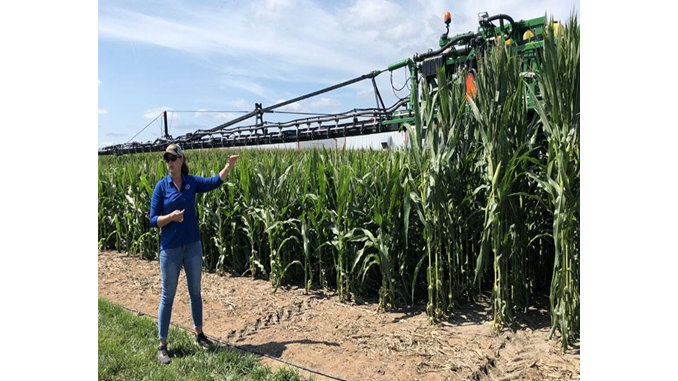Ag Informer – Growing Corn in the Future

The leading edge of farming is often razor thin. Be it technology or agronomic practices, it tends to evolve over time into tangible results that slowly tug yields higher. Here are five ways your corn fields will likely be pulled in the next five years.
1. FARMING FOR ROI
Big yields, record whole-farm averages and a never-ending drive toward more bushels might be a thing of the past. Randy Dowdy, co-founder of Total Acre, says given the dynamics of input costs and global prices, he expects operations to focus on returns rather than records.
Dowdy says this year, given the cost of inputs, its proof that ROI is the better bet.
2. SHORT-STATURE CORN
The days of 10′ stands could be limited as companies such as Bayer prepare to offer short-stature corn. These varieties, which will be available in the next couple of years, stand 30% shorter than conventional counterparts.
For standard equipment, such as a toolbar pulled behind a tractor, the shorter internodes could mean an extra six to 10 days of field access.
3. Intercropping
There is more than one way to plant a field, and soon, seeing corn and soybeans planted together won’t sound odd, Dowdy says.
Intercropping adds space and opportunity for end-of-row-type sunlight penetration.
4. AI AGRONOMY PRESCRIPTIONS
Placement and timing of crop protection and fertility products on the farm are an important part of maximizing efficacy. While farmers have always relied on recommendations from agronomists and product specialists, the future could be enhanced by big data and artificial intelligence.
He expects precision placement of products to get even more precise helping maximize ROI.
5. SMART SPRAYERS ROLL OUT
A wave of new sprayer technology, capable of distinguishing between crops, weeds and soil is headed for farm fields and promising to cut herbicide use by up to 90%. As input costs rise and availability remains a question mark for the season ahead, the advancement stands to change the optics around weed management.
He thinks getting the maximum benefit from this technology also means finding ways to limit the number of weeds in a field from the start.




